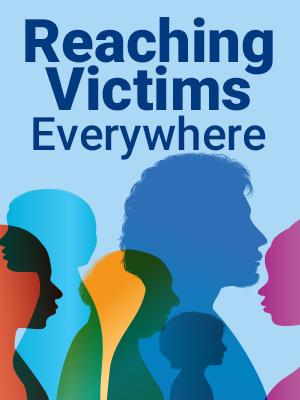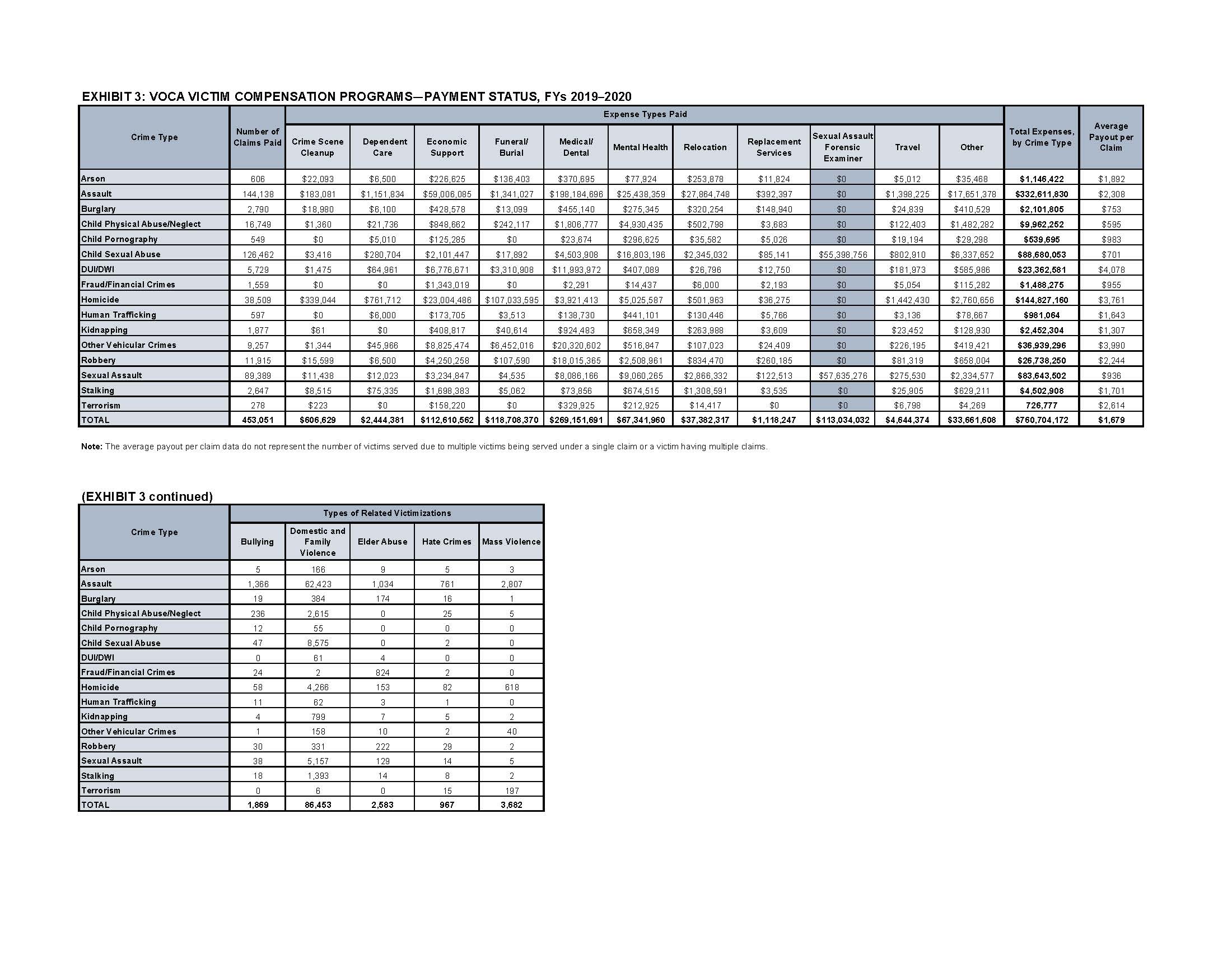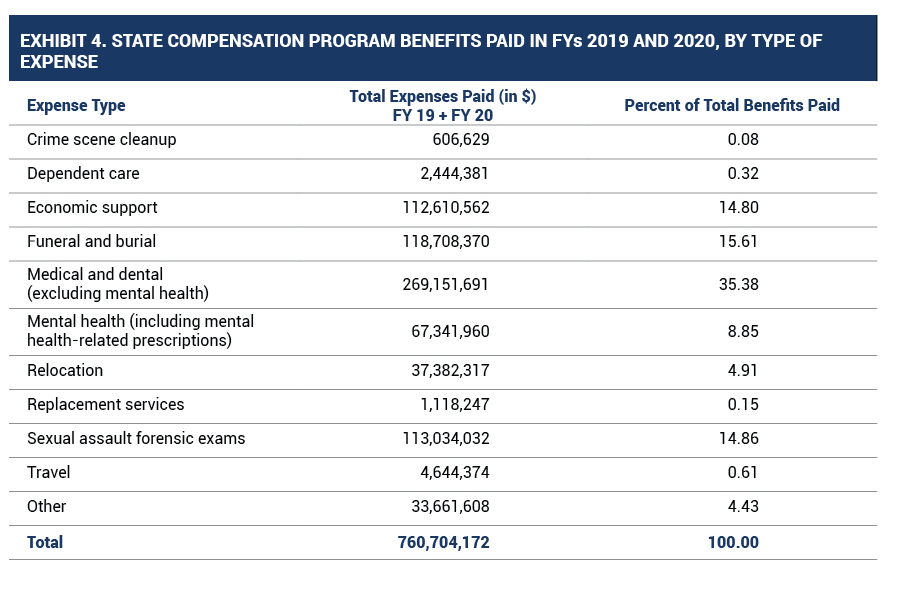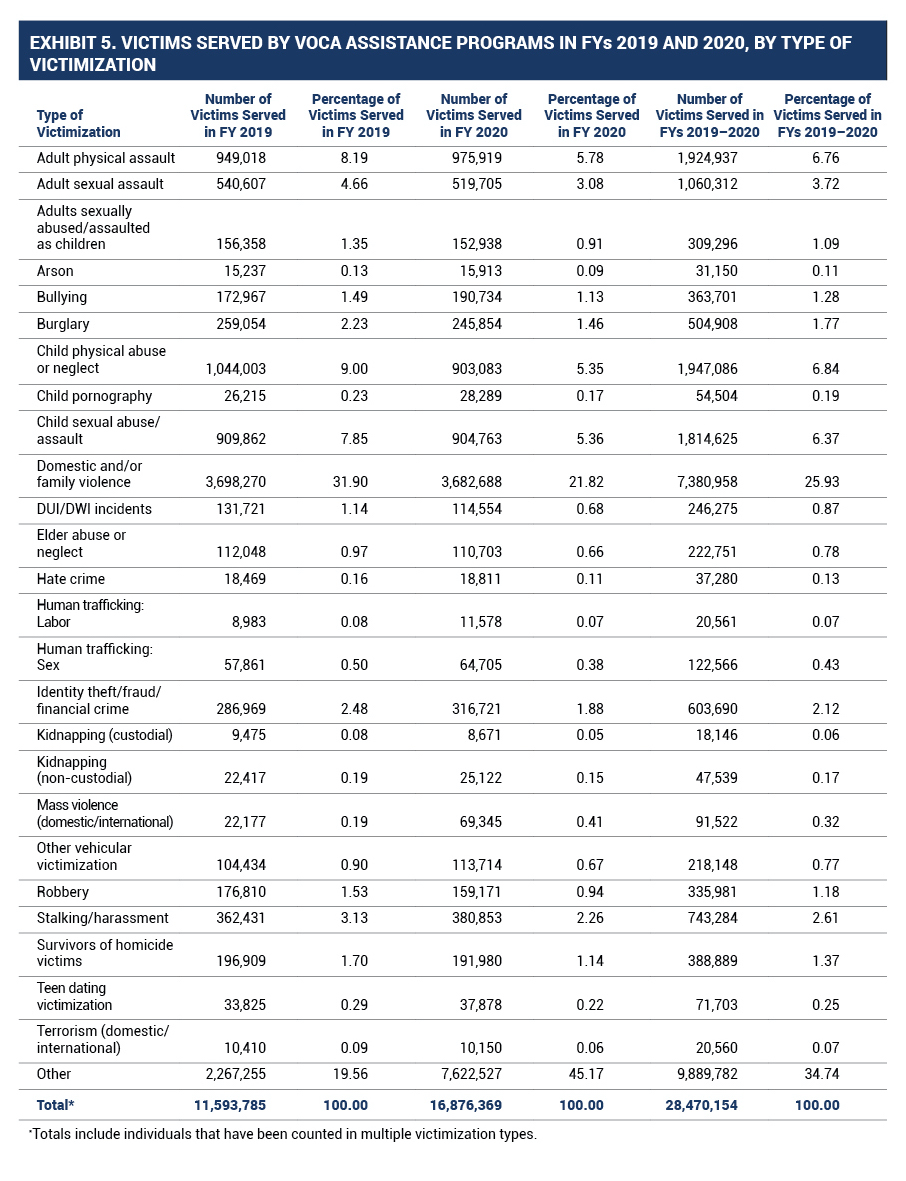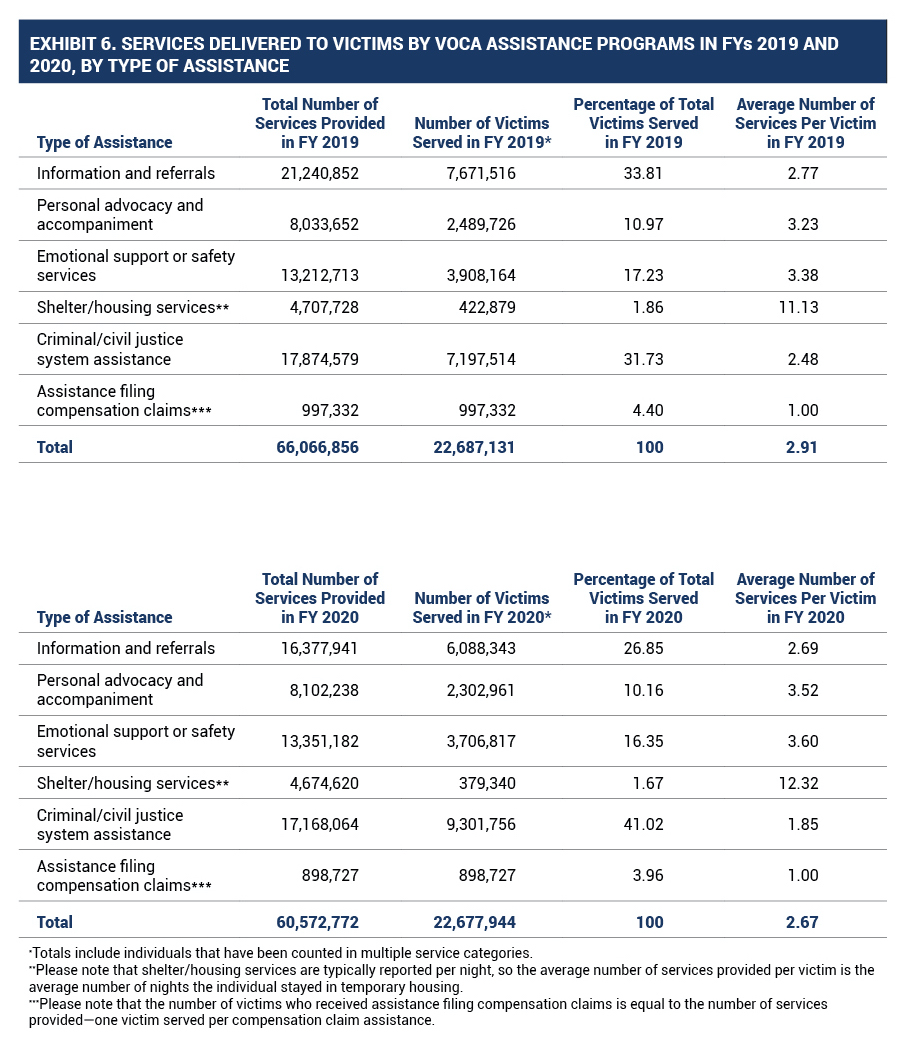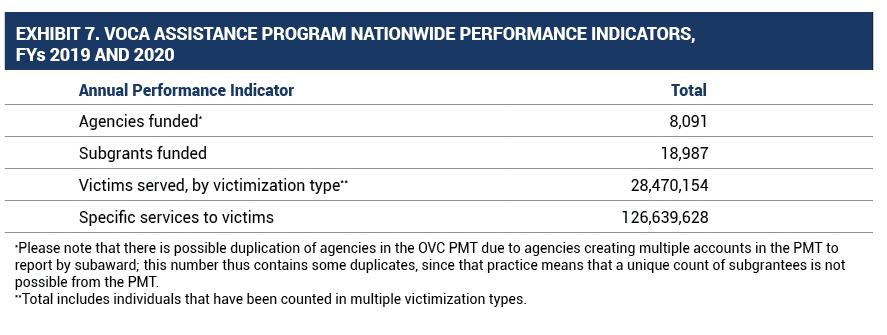Archival Notice
This is an archive page that is no longer being updated. It may contain outdated information and links may no longer function as originally intended.
Formula Grants: VOCA Compensation and Assistance
OVC administers two Victims of Crime Act (VOCA) formula grant programs that support crime victim compensation and assistance—the foundation of support for victims throughout the Nation. These formula grants account for approximately 95 percent of the VOCA funds that OVC disburses each year.
- The VOCA Victim Compensation Grant Program provides funding to supplement state compensation programs that reimburse victims for crime-related out-of-pocket expenses. Each year, VOCA victim compensation grants are awarded to every state, the District of Columbia, the U.S. Virgin Islands, Guam, Puerto Rico, and any other possession or territory of the United States to support costs for medical and dental care, counseling, funeral and burial expenses, and lost wages. Compensation programs may also reimburse victims for other types of expenses related to their victimization, such as travel, temporary lodging, crime scene cleanup, and dependent care. Although each state administers its program independently, most programs have similar eligibility requirements and offer comparable benefits.
- The VOCA Victim Assistance Grant Program supports thousands of direct victim assistance providers. Annual VOCA victim assistance grants are awarded to every state, the District of Columbia, Puerto Rico, the U.S. Virgin Islands, Guam, American Samoa, and the Northern Mariana Islands. Each state and territory provides subgrants to local community-based organizations and public agencies that provide services—such as intervention and crisis counseling, telephone and onsite information and referrals, criminal justice support and advocacy, shelter, therapy, and additional assistance—directly to victims. Funds may also be used to develop new programs that address emerging needs, gaps in services, and training for victim service providers.
In FY 2019, OVC’s VOCA victim compensation and victim assistance awards totaled more than $2.3 billion. OVC awarded more than $138 million in VOCA victim compensation funds and $2.2 billion in VOCA victim assistance funds in FY 2019. In FY 2020, OVC awarded more than $133 million in VOCA victim compensation funds and $1.6 billion in VOCA victim assistance funds.
VOCA Compensation Statistics
- In FYs 2019 and 2020, VOCA state compensation programs made payments to 453,051 claims throughout the Nation totaling $760,704,172 (see exhibit 3).
- The majority of claimants whose crime-related expenses were reimbursed were victims of assault (144,138 claims paid), child sexual abuse (126,462 claims paid), and sexual assault (89,389 claims paid) (see exhibit 3).
- Claims related to domestic and family violence accounted for 43 percent of the total number of assault claims that were reimbursed during FYs 2019 and 2020 (see exhibit 3).
- Costs related to medical and dental care during FYs 2019 and 2020 accounted for 35 percent of the total expenses reimbursed, followed by costs associated with funeral and burial (16 percent) and economic support (15 percent) (see exhibit 4).
- The overall average compensation per claim during the reporting period was approximately $1,679, with DUI/DWI payouts averaging the most, at $4,078 per claim (see exhibit 3).
- Of the 98 percent of victims who self-reported their gender, females constituted 64 percent.
- Of the 96 percent of victims who self-reported their age, 50 percent were 25–59 years old at the time of victimization.
VOCA Assistance Statistics
- In FYs 2019 and 2020, a total of 28,470,154 crime victims identified by victimization type benefited from VOCA-funded assistance throughout the Nation (see exhibits 5 and 7), provided by 8,091 subgrantees through 18,987 subawards (see exhibit 7).
- Victims of domestic violence, who numbered 7,380,958, accounted for 26 percent of victims who received assistance during the reporting period (see exhibit 5).
- More than 3.7 million victims of child physical or sexual abuse (over 13 percent of crime victims) received assistance—the second highest served type of victimization (see exhibit 5).
- Other types of crimes resulting in a marked percentage of victims receiving assistance in FYs 2019 and 2020 included adult assault (6.7 percent), adult sexual assault (3.7 percent), stalking/harassment (2.6 percent), and identity theft/fraud/financial crime (2.1 percent) (see exhibit 5).
- In FYs 2019 and 2020, the most common type of assistance provided to victims was criminal/civil justice system assistance, averaging 36 percent per year between the 2 years (see exhibit 6).
- In FYs 2019 and 2020, VOCA assistance grants supported 126,639,628 specific services. Many individuals need more than one type of assistance in the aftermath of victimization. During this time period, each victim received an average of 2.79 services (see exhibit 7).
Please note that the statistics reported in this section reflect those contained in the 2019 VOCA Nationwide Performance Reports, which consolidate the information reported in the individual state and territorial reports.
Grantees Report Performance Measure Data
Victim assistance and victim compensation grants continue to report their data using the Performance Measurement Tool (PMT). In FYs 2019 and 2020, in addition to annual reports and training materials, data from the PMT supported 145 ad hoc data requests. Data requests supported Freedom of Information Act requests, President’s budget requests, the National Domestic Violence Awareness Month proclamation, the Department of Justice’s (DOJ) Strategic Objective Review process, OVC grantee site visits, OVC staff conference presentations, and reports to Congress, among other initiatives. OVC is transitioning to a new system, JustGrants, that will combine grant, financial, and payment management to create a streamlined, end-to-end grants management system that will provide applicants and grantees with an improved user experience throughout key parts of the grant management life cycle. PMT and OVC’s other data collection systems will continue to be used until JustGrants can fully support all performance management functionality.


